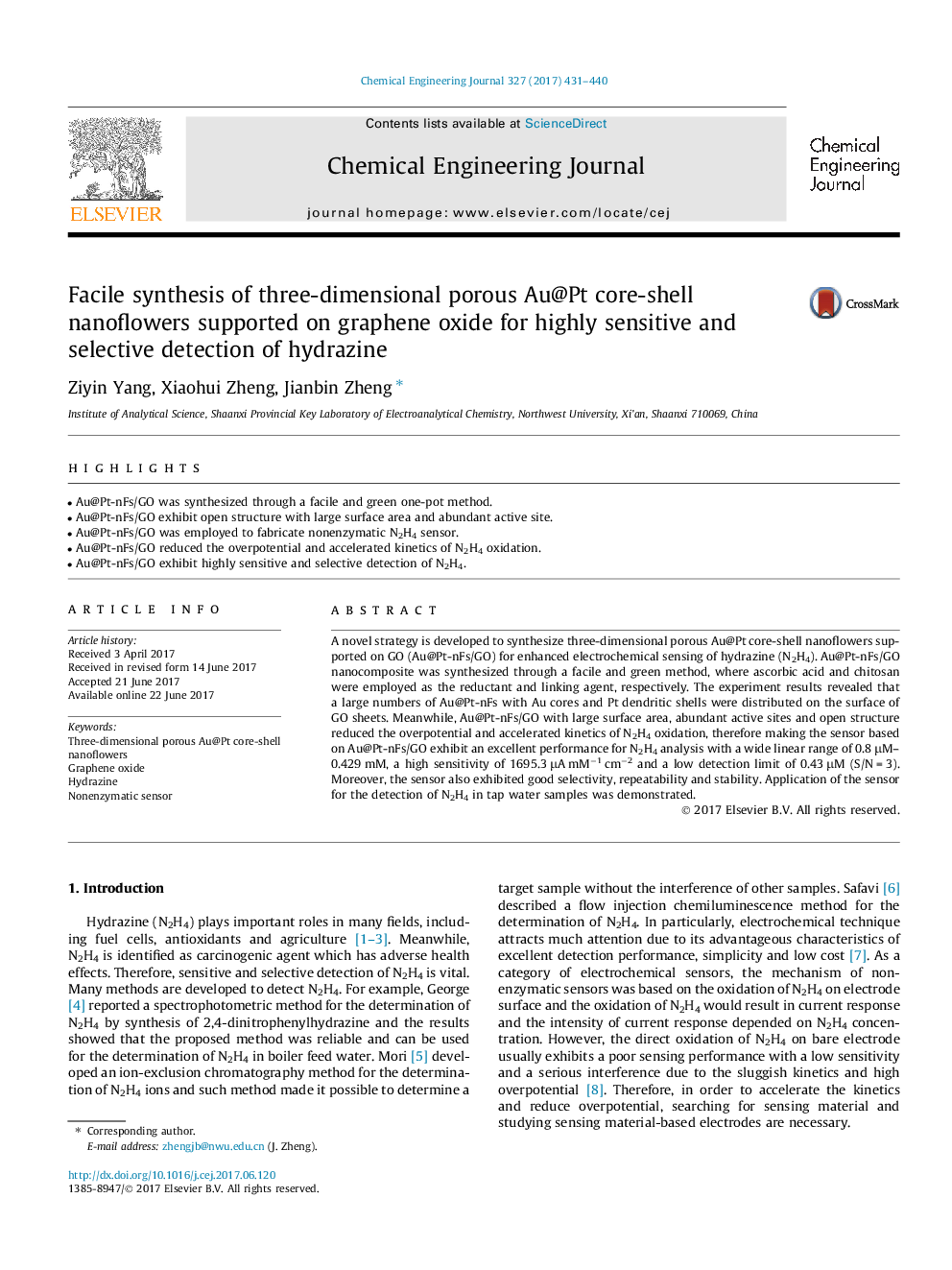| Article ID | Journal | Published Year | Pages | File Type |
|---|---|---|---|---|
| 6465037 | Chemical Engineering Journal | 2017 | 10 Pages |
â¢Au@Pt-nFs/GO was synthesized through a facile and green one-pot method.â¢Au@Pt-nFs/GO exhibit open structure with large surface area and abundant active site.â¢Au@Pt-nFs/GO was employed to fabricate nonenzymatic N2H4 sensor.â¢Au@Pt-nFs/GO reduced the overpotential and accelerated kinetics of N2H4 oxidation.â¢Au@Pt-nFs/GO exhibit highly sensitive and selective detection of N2H4.
A novel strategy is developed to synthesize three-dimensional porous Au@Pt core-shell nanoflowers supported on GO (Au@Pt-nFs/GO) for enhanced electrochemical sensing of hydrazine (N2H4). Au@Pt-nFs/GO nanocomposite was synthesized through a facile and green method, where ascorbic acid and chitosan were employed as the reductant and linking agent, respectively. The experiment results revealed that a large numbers of Au@Pt-nFs with Au cores and Pt dendritic shells were distributed on the surface of GO sheets. Meanwhile, Au@Pt-nFs/GO with large surface area, abundant active sites and open structure reduced the overpotential and accelerated kinetics of N2H4 oxidation, therefore making the sensor based on Au@Pt-nFs/GO exhibit an excellent performance for N2H4 analysis with a wide linear range of 0.8 μM-0.429 mM, a high sensitivity of 1695.3 μA mMâ1 cmâ2 and a low detection limit of 0.43 μM (S/N = 3). Moreover, the sensor also exhibited good selectivity, repeatability and stability. Application of the sensor for the detection of N2H4 in tap water samples was demonstrated.
